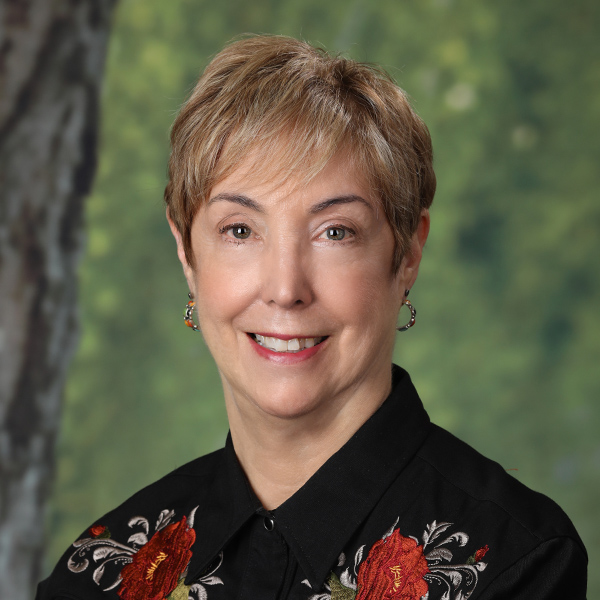Cameras and techniques
Oct 05, 2023 by Tempe Javitz
In the 1920s Jessamine was not just a mother and business partner
with her husband, she was developing her skills with different
cameras. Camera technology advanced at a rapid pace. Not
only journalists and artists, but the ordinary person on the street
was sporting a camera and taking hundreds of photographs.
Jessamine had purchased her first Kodak in 1908, but progressed
rapidly to cameras that allowed her greater flexibility.
In 1924 she listed in her diary a new No.A. Autographic-Kodak Jr.
folding camera with an Eastman Rapid-Rectilinear lens. A rectilinear
lens yields images, such as a wall of a building, with straight lines
instead of curved ones. Her standard Kodak 3A camera, marketed
between 1903 and 1915, created a panoramic effect when she positioned
it horizontally. Cameras continued to shrink in size. Her surviving
Kodak Vest Pocket Camera, manufactured between 1912 to 1926,
I’m sure was purchased due to its handy size, 4.75 inches x .75 inches
x 2.375 inches. She would stuff it in her jacket pocket when riding.
In early August 1927 she was sporting a new panorama camera.
Jessamine’s sister, Elsa Spear Byron, purchased a #2 Eastman enlarger
for their use in 1929. She ordered it from Denver, set it up in her
kitchen in Sheridan, and began enlarging photos for both of them.

“The painted hills” of colored rocks along Rosebud Creek on the
Cheyenne Reservation, 1924.
An important question is, “How did Jessamine develop her technique as a
photographer?” Was it with the help from her mother and encouragement
from her sister? Maybe. In discussing this interesting question with my
original manuscript editor, Patty Cogen (artist and art history major),
we concluded that Jessamine’s interactions with local artists strongly
affected her resultant style and composition. In the early 1910s
Jessamine was exposed to L.A. Huffman’s photos of her father’s ranching
operation. Then her continual interaction with local artists, Bill
Gollings, Fred Miller, Hans Kleiber, Fra Dana, and Charles Belden had an
enormous effect. These artists were drawn to the Sheridan area because
of the romance surrounding cowboys and cattle ranching, local American
Indian tribes and their famous battlefields, and the stunning Bighorn
Mountains that offered such varied artistic opportunities. These
relationships heavily contributed to Jessamine’s growth as a sterling
photographer.
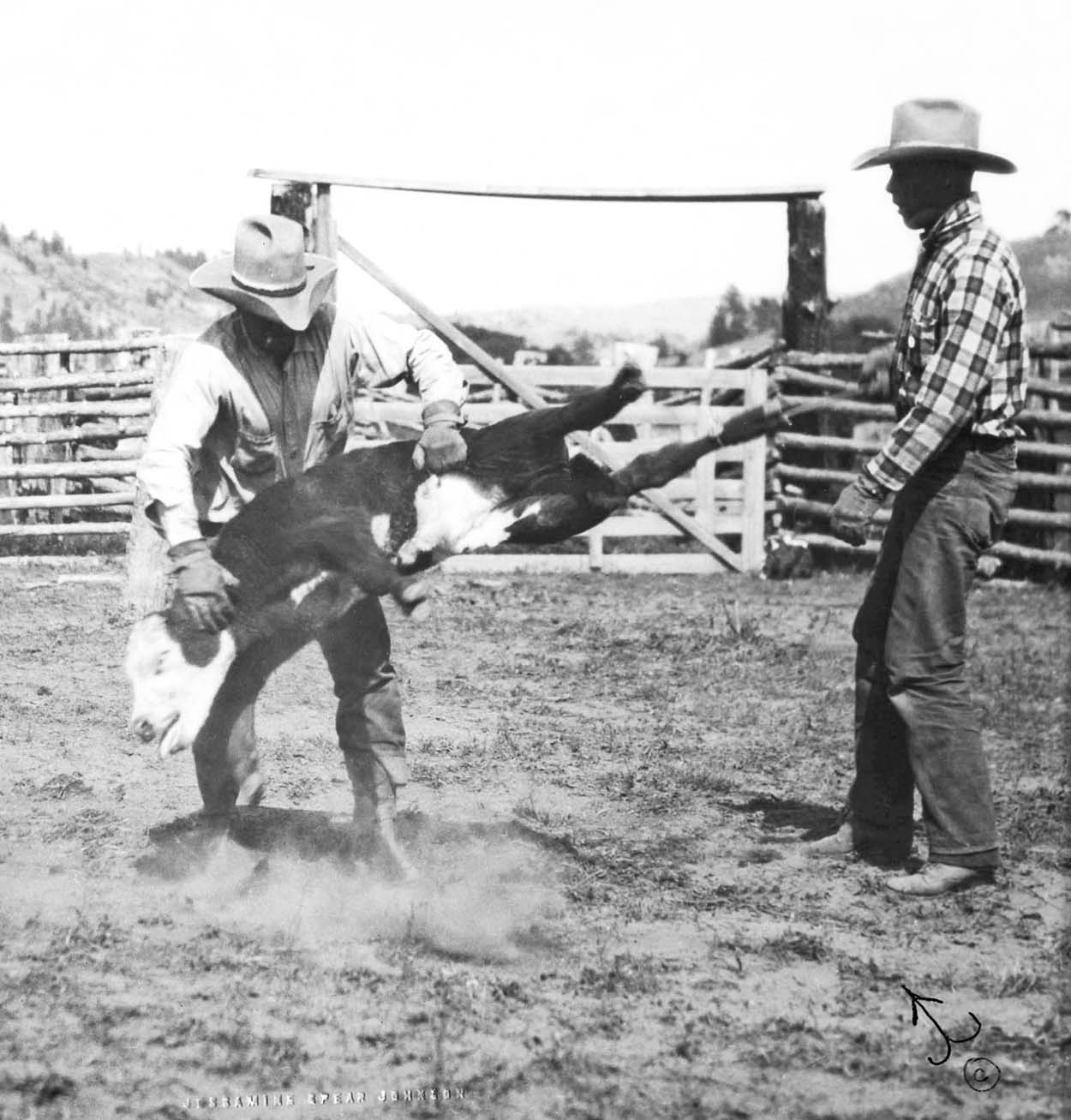
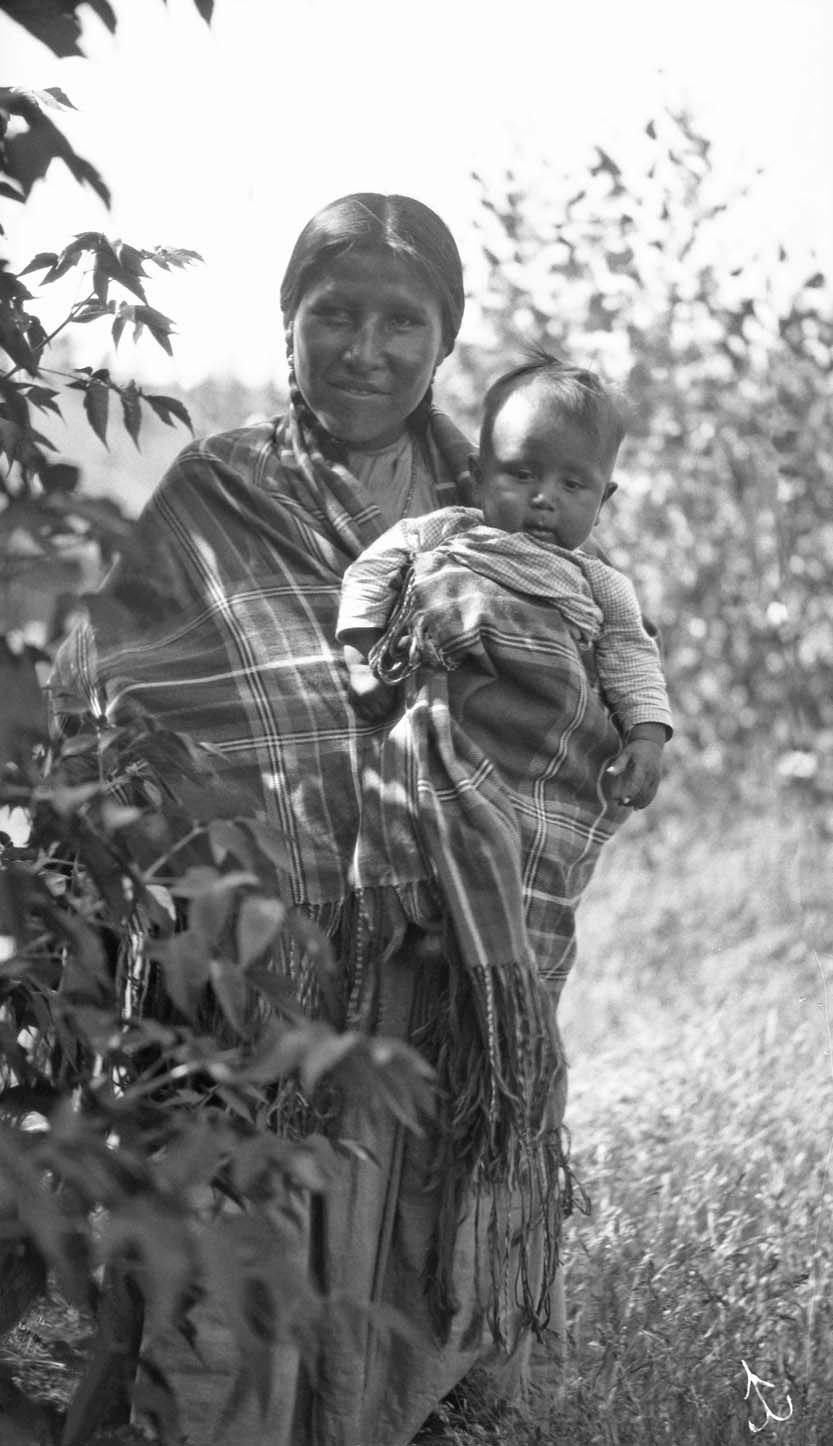
X4 Ranch branding 1920s. July 1925, Iris & Charles Rising Sun
Jessamine at first mimicked LA Huffman’s expansive cattle herd photos,
but soon narrowed her vision to single activities such as branding, breaking
a colt, or fixing a fence. Gollings’ paintings encouraged her to literally
get “close up” to her subjects to enhance the image. When taking her photos
horseback she was able to move among the cattle or cowboys by training her
horses to quickly stand still until they heard the shutter click. Hans
Kleiber’s wonderful etchings taught her a great deal about using light and
shadows to highlight her landscape images. Belden’s photos of the Bighorn
mountains and canyons were down right inspirational. These were Jessamine’s
instructors. She had no formal training, but she picked up techniques from
her artist friends and she practiced. The more photos she took, the more
she learned what worked. She rarely missed an opportunity for a camera was
always strapped to her shoulder wherever she went.
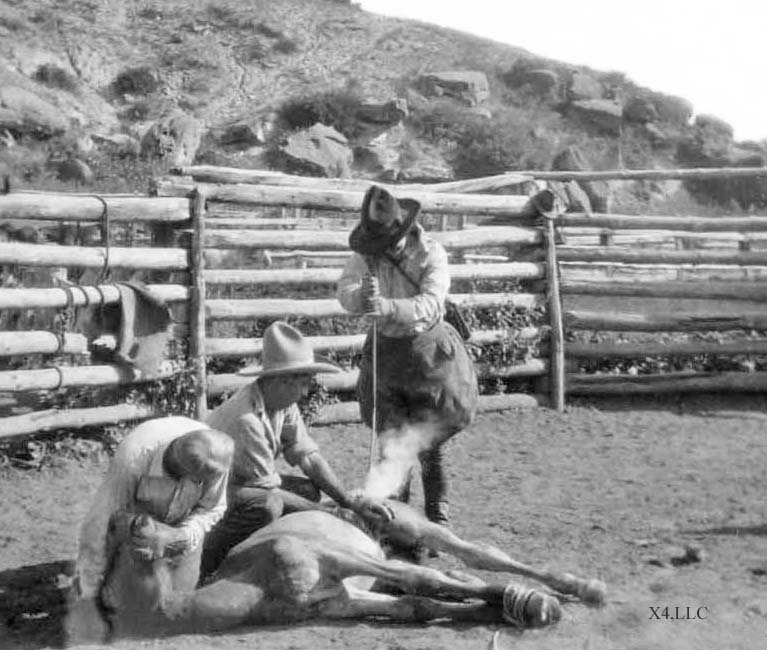
Jessamine with her camera at the ready, X4 branding 1920s.
Jessamine often used doorways, fences or trees to frame her subjects. She
used perspective in clever ways to draw the viewers eye across the photo to
converge on a distant horizon or figure.
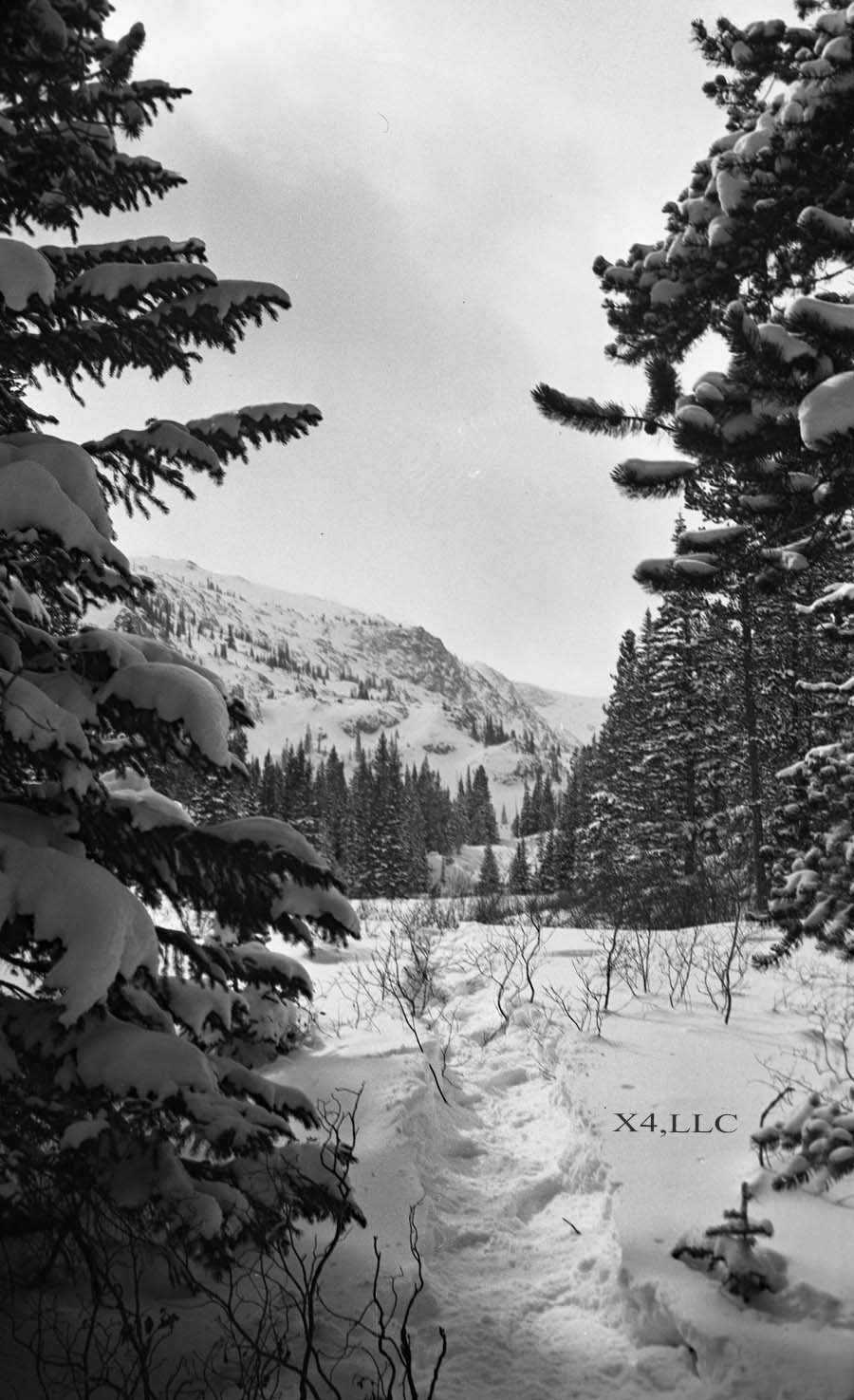
Edelman Pass photo from 1932, Big Horn Mountains
In time Jessamine was able to convey her individual style with great ability.
Unhindered by the need to make a living from photography, Jessamine was free
to explore a wide range of genres—"from botany to battlefields.”* Jessamine
documented range life; took photos we would call photojournalism of fires,
cars, rodeos, Indian fairs and roundups; recorded changes in fashion; created
candid photos of children and grown cowboys alike; captured images of
homesteader cabins and mining sites; inspired her viewers with the peaks,
streams, and flowers of the Bighorn mountains; and captured moods and expressive
faces with her portraiture.
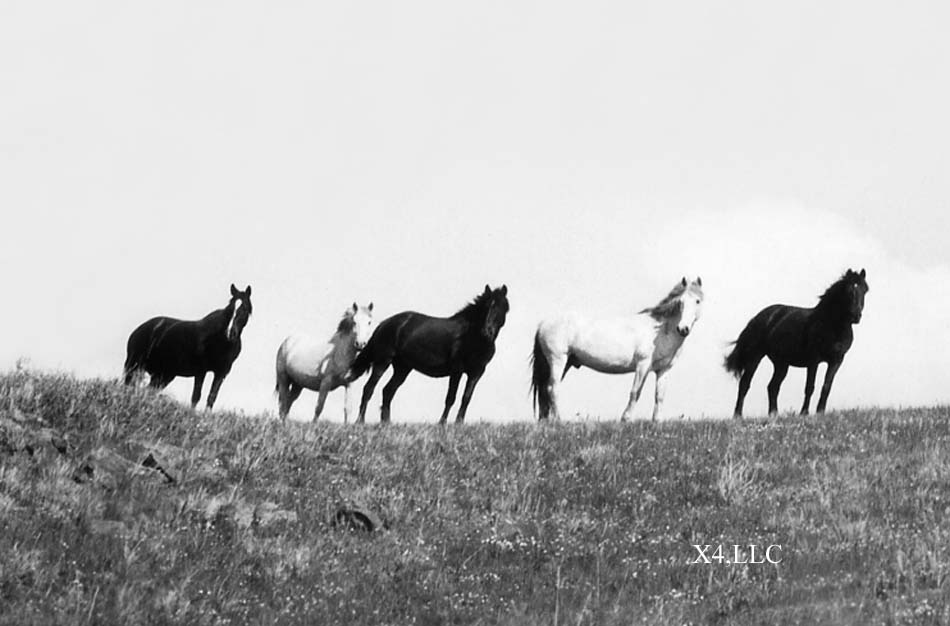
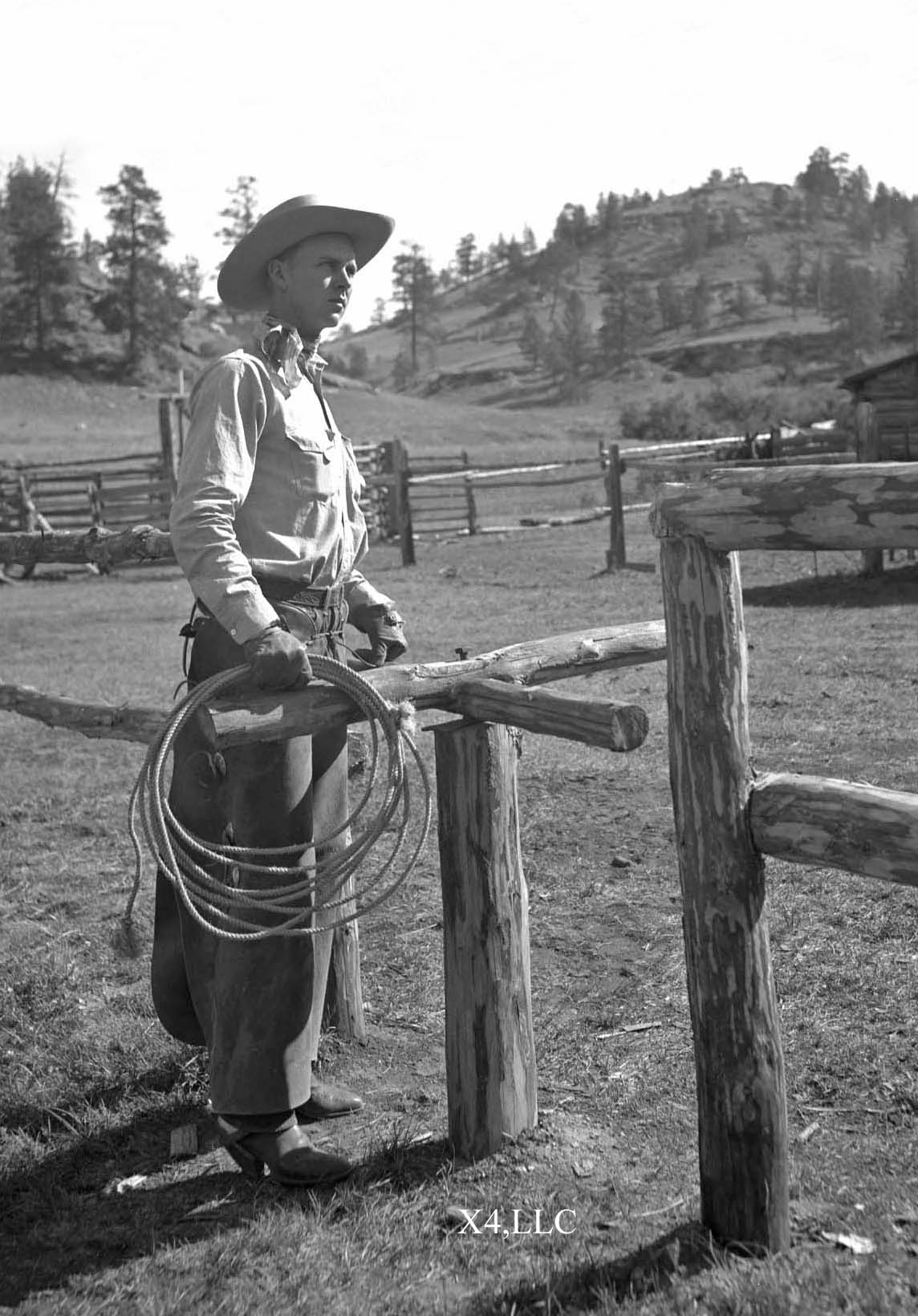
X4 Horses on skyline,June 1927. Torrey Johnson, Rosebud Mtn Ranch, Aug 1939
I concluded long ago, as I worked for years scanning and cataloging my
grandmother Jessamine’s marvelous photos, that here was a woman with
“an artistic eye”, who through lots of practice and many wonderful cameras
found a way to express the artiste within her. We are the lucky audience.
Cowboy Jargon:
Green Up: What the grass does in the spring.
Green Broke: A horse that has been ridden only once or twice and would
be hard to control.
Greenhorn: A person who doesn’t know their way around the West yet.
A tenderfoot or a green hand.
* A quote from Patty Cogen (my friend & editor) while discussing Jessamine
in the summer of 2018.
with her husband, she was developing her skills with different
cameras. Camera technology advanced at a rapid pace. Not
only journalists and artists, but the ordinary person on the street
was sporting a camera and taking hundreds of photographs.
Jessamine had purchased her first Kodak in 1908, but progressed
rapidly to cameras that allowed her greater flexibility.
In 1924 she listed in her diary a new No.A. Autographic-Kodak Jr.
folding camera with an Eastman Rapid-Rectilinear lens. A rectilinear
lens yields images, such as a wall of a building, with straight lines
instead of curved ones. Her standard Kodak 3A camera, marketed
between 1903 and 1915, created a panoramic effect when she positioned
it horizontally. Cameras continued to shrink in size. Her surviving
Kodak Vest Pocket Camera, manufactured between 1912 to 1926,
I’m sure was purchased due to its handy size, 4.75 inches x .75 inches
x 2.375 inches. She would stuff it in her jacket pocket when riding.
In early August 1927 she was sporting a new panorama camera.
Jessamine’s sister, Elsa Spear Byron, purchased a #2 Eastman enlarger
for their use in 1929. She ordered it from Denver, set it up in her
kitchen in Sheridan, and began enlarging photos for both of them.

“The painted hills” of colored rocks along Rosebud Creek on the
Cheyenne Reservation, 1924.
An important question is, “How did Jessamine develop her technique as a
photographer?” Was it with the help from her mother and encouragement
from her sister? Maybe. In discussing this interesting question with my
original manuscript editor, Patty Cogen (artist and art history major),
we concluded that Jessamine’s interactions with local artists strongly
affected her resultant style and composition. In the early 1910s
Jessamine was exposed to L.A. Huffman’s photos of her father’s ranching
operation. Then her continual interaction with local artists, Bill
Gollings, Fred Miller, Hans Kleiber, Fra Dana, and Charles Belden had an
enormous effect. These artists were drawn to the Sheridan area because
of the romance surrounding cowboys and cattle ranching, local American
Indian tribes and their famous battlefields, and the stunning Bighorn
Mountains that offered such varied artistic opportunities. These
relationships heavily contributed to Jessamine’s growth as a sterling
photographer.


X4 Ranch branding 1920s. July 1925, Iris & Charles Rising Sun
Jessamine at first mimicked LA Huffman’s expansive cattle herd photos,
but soon narrowed her vision to single activities such as branding, breaking
a colt, or fixing a fence. Gollings’ paintings encouraged her to literally
get “close up” to her subjects to enhance the image. When taking her photos
horseback she was able to move among the cattle or cowboys by training her
horses to quickly stand still until they heard the shutter click. Hans
Kleiber’s wonderful etchings taught her a great deal about using light and
shadows to highlight her landscape images. Belden’s photos of the Bighorn
mountains and canyons were down right inspirational. These were Jessamine’s
instructors. She had no formal training, but she picked up techniques from
her artist friends and she practiced. The more photos she took, the more
she learned what worked. She rarely missed an opportunity for a camera was
always strapped to her shoulder wherever she went.

Jessamine with her camera at the ready, X4 branding 1920s.
Jessamine often used doorways, fences or trees to frame her subjects. She
used perspective in clever ways to draw the viewers eye across the photo to
converge on a distant horizon or figure.

Edelman Pass photo from 1932, Big Horn Mountains
In time Jessamine was able to convey her individual style with great ability.
Unhindered by the need to make a living from photography, Jessamine was free
to explore a wide range of genres—"from botany to battlefields.”* Jessamine
documented range life; took photos we would call photojournalism of fires,
cars, rodeos, Indian fairs and roundups; recorded changes in fashion; created
candid photos of children and grown cowboys alike; captured images of
homesteader cabins and mining sites; inspired her viewers with the peaks,
streams, and flowers of the Bighorn mountains; and captured moods and expressive
faces with her portraiture.


X4 Horses on skyline,June 1927. Torrey Johnson, Rosebud Mtn Ranch, Aug 1939
I concluded long ago, as I worked for years scanning and cataloging my
grandmother Jessamine’s marvelous photos, that here was a woman with
“an artistic eye”, who through lots of practice and many wonderful cameras
found a way to express the artiste within her. We are the lucky audience.
Cowboy Jargon:
Green Up: What the grass does in the spring.
Green Broke: A horse that has been ridden only once or twice and would
be hard to control.
Greenhorn: A person who doesn’t know their way around the West yet.
A tenderfoot or a green hand.
* A quote from Patty Cogen (my friend & editor) while discussing Jessamine
in the summer of 2018.
